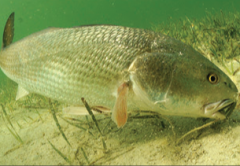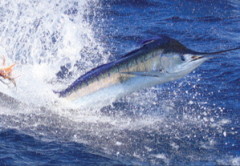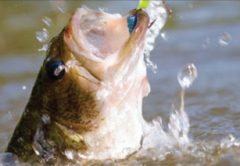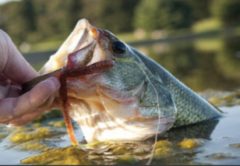March Magic – Big Bass
By Phil Wolf, Co-Publisher Orlando Coastal Angler Magazine
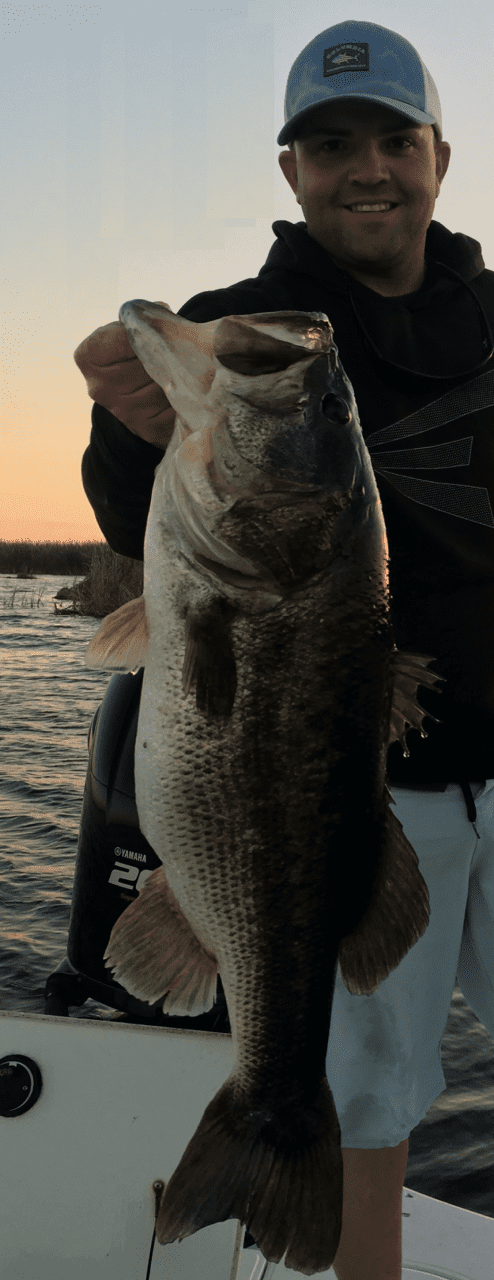
Egg laying females begin their annual migration to the shallows following smaller, younger males when moon phases change. The thinner, super aggressive males move into the shallows first. They find protected places to prep the bed for the female to lay her eggs. Central Florida’s frontal conditions are constantly changing with fronts blowing through every 7 to 10 days – March is usually the windiest. If we get a short warming trend incurring a spike in water temperature between 62 to 66 degrees, combined with a full-moon or new-moon phase, the egg filled females bolt to the shallows from their nearby staging spots. The females will search out the buck bass who has already prepped a bed by fanning a roundish area of lake bottom with his tail until it is free and clear of sediment or debris. These beds are usually about three feet in diameter with clean sandy bottom you can see from several yards. The females will arrive to the bedding areas, seek out a bed that suits them, lay several thousand eggs, and return to the staging areas all within a few days, most times relating to a new or full moon phase. The aggressive bucks are left behind in the bedding areas to protect the beds from the natural predators like bluegill, shiners and even other bass who will eat the fry the young, hatched eggs. The bucks protect these small schools of fry until there are large enough to move off to grow up on their own.
Spawning season lasts several months here in Central Florida. The month of March is the peak of the season. The aggressive bites you get from these buck bass will be the years’ best. In clear shallow water maybe four to five feet deep or less, sight fishing for aggressive males and large females can be the best fishing for any angler no doubt.
The aggressive young bucks will protect the prepared beds with their life. Buck bass on the beds can pick-up your bait by the tail, remove it from the bed and spit the bait out without ever feeling a nibble – while you are watching! A buck bass may remove the same bait multiple times off his bed before he gets mad enough to eat your presentation and you are able to set the hook. Days prior to or just following the changing moon phases is when bass move to the deeper water staging locations close to bedding areas. They bite just about anything harder than any other time of year because they’re feeding heavily getting ready for the chore of spawning. In between the moon phases search baits like large 4” – 5” swim baits, plastic frog baits, top water poppers and fast-moving chatter baits will get super aggressive strikes. As multiple bucks will be in the same areas, these bucks will compete with one another trying to get a meal before another bass does. Look for these aggressive fish pushing a wake when they zoom-in on a slow rolled swim bait, plastic frog or speed worm. It is very hard not to set the hook before they crush your presentation.
Search your local lakes looking for the best bedding locations. Look for areas most protected from the northeastern winds. The places most protected from the wind will warm up the fastest. Look for hard, sandy and shell covered bottoms with the cleanest water you can find in the shallows of 4’ or less. Find scattered vegetation like Kissimmee grass, cattails, hard reeds or buggy whips, thin lily pads both large and small with deeper water and heavy vegetation nearby. Having a good pair of polarized sunglasses is a must. When you see existing beds in the shallows or smaller buck bass moving about, you can bet the larger females are close. On days between the moon phases fish the thicker cover adjacent to the beds you find. The larger females will be just waiting for Mother Natures’ time clock to move into the bedding area. Flipping or pitching heavy weighted creature baits in the holes and pockets of the densest grass or mats will produce some rod jarring bites. The egg bearing females are heavyweights. A normal female 8lb. bass will be two to three pounds heavier due to increased feeding and the weight of the eggs they are carrying.
To help protect these giant female largemouth bass, please take great care when handling your catch. Make sure to remove the hook quickly and return the fish to the water; only keep the fish out of the water as long as you can hold your own breath. Let them breathe in your baitwell while the camera is readied. Position the boat for a good photo and only then take photos, measure the fish and return it to finish its spawning cycle and a chance for her to fight another day. Large female spawning bass are more vulnerable to death for mis-handling fish. Please practice catch-photo-release and pass on good fish handling behavior to your kids and other anglers. Your best chance at catching a lifetime biggest bass is during the spring-time spawn. Tight lines and good luck bassing!


